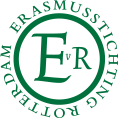Article
The Poetics of Othering

April 30, 2007
Keertana tradition: a reference to the ancient Indian tradition of participatory sacred music
Sahajiya poets: a reference to a school of thought that emerged in Buddhism around the 8th century AD, which gave rise to much early Bengali poetry
Udaya Narayana Singh talks to Rizio Yohannan Raj about his Muse in Maithili.
RYR: Could you comment on the evolution and thematic thrust of your Maithili poetry?
UNS: My first collection of poems in Maithili was published under the pseudonym Nachiketa when I was 15. Those days, I looked inwards and was perhaps sarcastic about the world outside. The influence of my grandparents had also given my work a mythological backdrop. With the second collection in 1971, my poetry got “multiply nested”, and began to talk about ‘language’ in a self-reflecting mode. Love became a major theme as well.
Something keeps telling me that I must talk about man, about nature and the various institutions such as marriage, nation etc and the relationships of love, envy, gender and power that they have set up. I have realized that I must look out of the window of my language; look beyond my own locus to bring in some freshness, in terms of theme as well as expression, into Maithili.
RYR: How do you see the question of ‘roots’ in terms of writing poetry?
UNS: Poets are always seen trying to erase the line of demarcation between the local and the global, between the roots and the ground above. These harbingers of change try out ‘othering’– changing one’s personal terminations from the first to third person. The impersonality with which our own Keertana tradition works, and the clear lack of willingness of our Sahajiya poets to reveal their identity point out that we have always had this tradition of othering. The time comes when one realizes that a lot of what is ‘new’ in the indigene is already ‘given’ elsewhere.
RYR: Considering you have access to many languages, how do you look at your choice of Maithili as your major language of poetic expression?
UNS: I began to write poems in both Maithili and Bangla from the time I was nine. While my debut collection in Maithili appeared as early as 1966, my poems in Bangla came out only in 1987.
Initially, when I looked only inward, my vision was entangled in numerous elements that added up to make my own cultural space in Mithila. I wouldn’t look at the whole then; little things that had been a part of my memory and experience crowded my vision. But later when I looked out and traveled extensively, other icons, images, colors, sounds, texts and graphs engaged my attention due to the striking freshness they offered. I have the freedom to bring this sense of enrichment into my own cultural space in Maithili, and that sustains me in my language.
RYR: How do you see yourself in your multi-lingual milieu? This is a question about your forays into other languages in terms of creative and academic exercises too.
UNS: My father Prabodh Narayan spoke, wrote, translated into and edited in Maithili and my mother Anima was a speaker of Bangla, although both taught Hindi language and literature. All three languages, therefore, came naturally to me. The gaps between my poetry collections have been interspersed with plays and one-acts in Maithili as well as literary essays in Bangla and English. I was a student of Sanskrit in the traditional learning environment (called Tol or Chatushpathi) as well in the Sanskrit College at the Bachelor’s level. I picked up Gujarati, Punjabi and Telugu during my stay in Surat, Delhi and Hyderabad. I have been through a two-year French diploma as well. But I am a grassroots bilingual, knowing Maithili and Bangla.
My urge to write in both Maithili and Bangla has enriched my expressions in both. Maithili, beginning from the days of Vidyapati, has been a model for Bangla poets and Bangla serves as a modern literary giant for today’s Maithili writers. One shouldn’t forget that Vidyapati wrote in Maithili, Prakrit, Avahattha and Sanskrit – whereas Tagore tried Bangla, Brajabuli and English. In India, multilingual writing is not anything new. You see, the choice of a language is the prerogative of an individual writer.
RYR: Have your interventions as a translator helped or hindered your creative abilities and activities? What are your views on translation per se?
UNS: The exposure to many languages has been a great boon to me. Translation came naturally and I edited the only poetry journal Maithili ever had: ‘Maithili Kavita’ (1968-72). I have never been worried about the ‘losses’ in translation. In fact, I look at translation/ transcreation as a journey.
India is one of the most well-known cases of a civilization that travels. Unlike in the West, translation is not a site of conflict for us; for us anuvād is a travel between texts, cultures, and two or more times and spaces. One language shows the way it has traversed, which then becomes a model for another language to tread on. Translation thus acts like a kinship tool, which allows others to be appropriated within the self.
RYR: What are your comments on your recent book in translation, Second Person Singular?
UNS: It is a product of six years of translation activity, done bit by bit. This is perhaps the only major book-length translation from Maithili into English. While finalizing it, you (Rizio Yohannan Raj) joined in to make those changes that have made the book the way it is now. Sanjay Bhattacharya, the well-known artist, spent three months to work on the illustrations after listening to the original as well as the translations. I am sure there will eventually be better translations published from Maithili, but this book sets an example of how one can introduce even marginalized literature into English with care and finesse.
RYR: What are you working on now? New books?
UNS: A book titled India Writes: A Story of Linguistic and Literary Plurality was released at the Frankfurt Book Fair. A book in English on translation theory, Translation as Growth is due to appear soon. There will be three sets of books in Bangla shortly: Nirbaacita, my second collection of Bangla poems, a collection of short stories for children, and a two volume collection of my literary essays. There will be a collection of Maithili short stories in English translation and another of representative poetry from Maithili in the last fifty years. A play in Maithili is also coming up.
RYR: How do you ultimately see yourself - a poet, playwright, translator or a linguist?
In the true spirit of the diversity in India, I see myself as all four rolled into a committed individual who has been conscious of his language(s). One wears several tags in a pluralistic society. Yet, if I have to put them in a sequence, it would be like this: poet, linguist, playwright and translator.
April, 2007
Notes:UNS: My first collection of poems in Maithili was published under the pseudonym Nachiketa when I was 15. Those days, I looked inwards and was perhaps sarcastic about the world outside. The influence of my grandparents had also given my work a mythological backdrop. With the second collection in 1971, my poetry got “multiply nested”, and began to talk about ‘language’ in a self-reflecting mode. Love became a major theme as well.
Something keeps telling me that I must talk about man, about nature and the various institutions such as marriage, nation etc and the relationships of love, envy, gender and power that they have set up. I have realized that I must look out of the window of my language; look beyond my own locus to bring in some freshness, in terms of theme as well as expression, into Maithili.
RYR: How do you see the question of ‘roots’ in terms of writing poetry?
UNS: Poets are always seen trying to erase the line of demarcation between the local and the global, between the roots and the ground above. These harbingers of change try out ‘othering’– changing one’s personal terminations from the first to third person. The impersonality with which our own Keertana tradition works, and the clear lack of willingness of our Sahajiya poets to reveal their identity point out that we have always had this tradition of othering. The time comes when one realizes that a lot of what is ‘new’ in the indigene is already ‘given’ elsewhere.
RYR: Considering you have access to many languages, how do you look at your choice of Maithili as your major language of poetic expression?
UNS: I began to write poems in both Maithili and Bangla from the time I was nine. While my debut collection in Maithili appeared as early as 1966, my poems in Bangla came out only in 1987.
Initially, when I looked only inward, my vision was entangled in numerous elements that added up to make my own cultural space in Mithila. I wouldn’t look at the whole then; little things that had been a part of my memory and experience crowded my vision. But later when I looked out and traveled extensively, other icons, images, colors, sounds, texts and graphs engaged my attention due to the striking freshness they offered. I have the freedom to bring this sense of enrichment into my own cultural space in Maithili, and that sustains me in my language.
RYR: How do you see yourself in your multi-lingual milieu? This is a question about your forays into other languages in terms of creative and academic exercises too.
UNS: My father Prabodh Narayan spoke, wrote, translated into and edited in Maithili and my mother Anima was a speaker of Bangla, although both taught Hindi language and literature. All three languages, therefore, came naturally to me. The gaps between my poetry collections have been interspersed with plays and one-acts in Maithili as well as literary essays in Bangla and English. I was a student of Sanskrit in the traditional learning environment (called Tol or Chatushpathi) as well in the Sanskrit College at the Bachelor’s level. I picked up Gujarati, Punjabi and Telugu during my stay in Surat, Delhi and Hyderabad. I have been through a two-year French diploma as well. But I am a grassroots bilingual, knowing Maithili and Bangla.
My urge to write in both Maithili and Bangla has enriched my expressions in both. Maithili, beginning from the days of Vidyapati, has been a model for Bangla poets and Bangla serves as a modern literary giant for today’s Maithili writers. One shouldn’t forget that Vidyapati wrote in Maithili, Prakrit, Avahattha and Sanskrit – whereas Tagore tried Bangla, Brajabuli and English. In India, multilingual writing is not anything new. You see, the choice of a language is the prerogative of an individual writer.
RYR: Have your interventions as a translator helped or hindered your creative abilities and activities? What are your views on translation per se?
UNS: The exposure to many languages has been a great boon to me. Translation came naturally and I edited the only poetry journal Maithili ever had: ‘Maithili Kavita’ (1968-72). I have never been worried about the ‘losses’ in translation. In fact, I look at translation/ transcreation as a journey.
India is one of the most well-known cases of a civilization that travels. Unlike in the West, translation is not a site of conflict for us; for us anuvād is a travel between texts, cultures, and two or more times and spaces. One language shows the way it has traversed, which then becomes a model for another language to tread on. Translation thus acts like a kinship tool, which allows others to be appropriated within the self.
RYR: What are your comments on your recent book in translation, Second Person Singular?
UNS: It is a product of six years of translation activity, done bit by bit. This is perhaps the only major book-length translation from Maithili into English. While finalizing it, you (Rizio Yohannan Raj) joined in to make those changes that have made the book the way it is now. Sanjay Bhattacharya, the well-known artist, spent three months to work on the illustrations after listening to the original as well as the translations. I am sure there will eventually be better translations published from Maithili, but this book sets an example of how one can introduce even marginalized literature into English with care and finesse.
RYR: What are you working on now? New books?
UNS: A book titled India Writes: A Story of Linguistic and Literary Plurality was released at the Frankfurt Book Fair. A book in English on translation theory, Translation as Growth is due to appear soon. There will be three sets of books in Bangla shortly: Nirbaacita, my second collection of Bangla poems, a collection of short stories for children, and a two volume collection of my literary essays. There will be a collection of Maithili short stories in English translation and another of representative poetry from Maithili in the last fifty years. A play in Maithili is also coming up.
RYR: How do you ultimately see yourself - a poet, playwright, translator or a linguist?
In the true spirit of the diversity in India, I see myself as all four rolled into a committed individual who has been conscious of his language(s). One wears several tags in a pluralistic society. Yet, if I have to put them in a sequence, it would be like this: poet, linguist, playwright and translator.
April, 2007
Keertana tradition: a reference to the ancient Indian tradition of participatory sacred music
Sahajiya poets: a reference to a school of thought that emerged in Buddhism around the 8th century AD, which gave rise to much early Bengali poetry
© Rizio Yohannan Raj
Sponsors
























